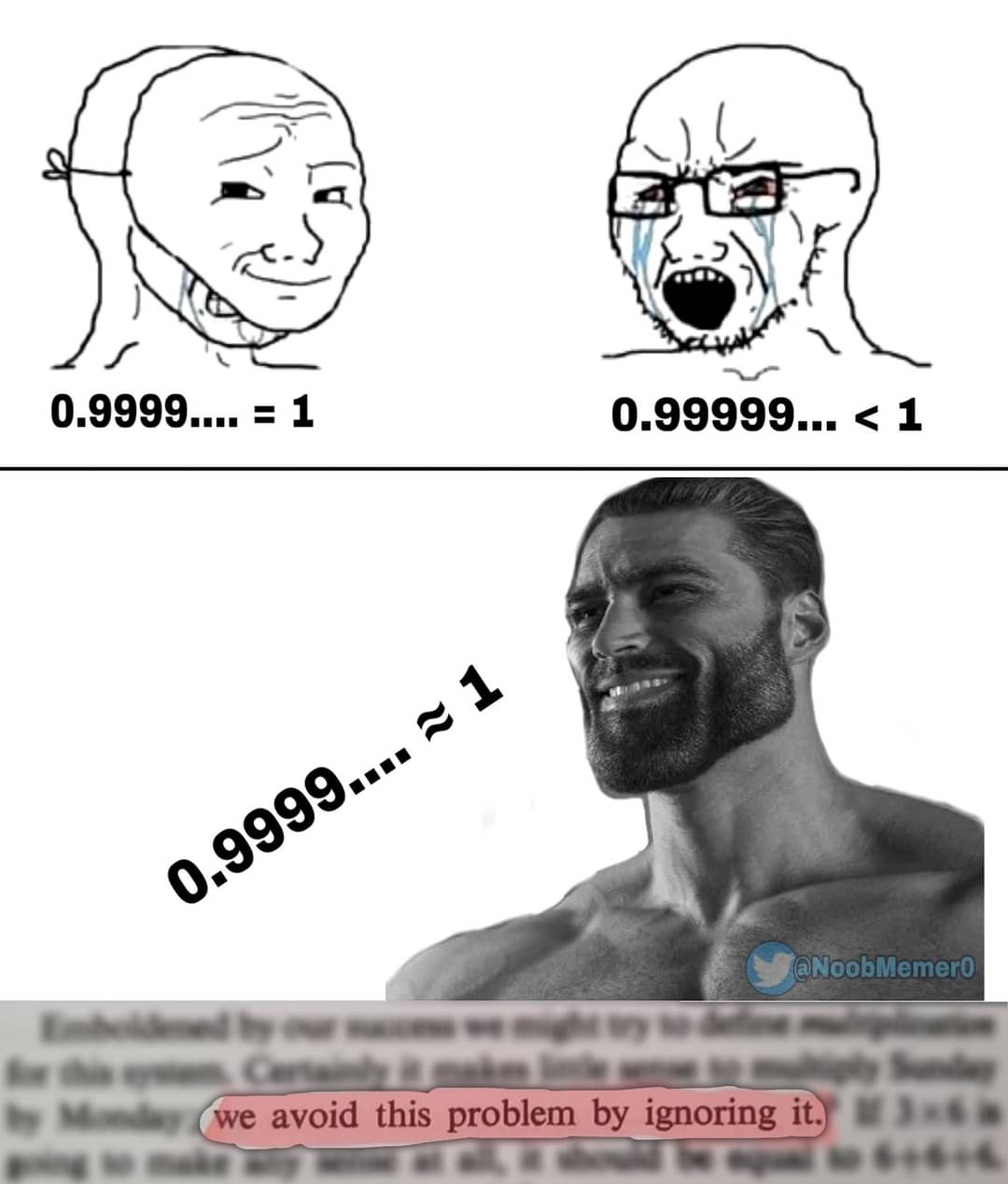this post was submitted on 27 Jun 2024
784 points (95.2% liked)
Science Memes
12539 readers
3125 users here now
Welcome to c/science_memes @ Mander.xyz!
A place for majestic STEMLORD peacocking, as well as memes about the realities of working in a lab.

Rules
- Don't throw mud. Behave like an intellectual and remember the human.
- Keep it rooted (on topic).
- No spam.
- Infographics welcome, get schooled.
This is a science community. We use the Dawkins definition of meme.
Research Committee
Other Mander Communities
Science and Research
Biology and Life Sciences
- [email protected]
- [email protected]
- [email protected]
- [email protected]
- [email protected]
- [email protected]
- [email protected]
- [email protected]
- [email protected]
- [email protected]
- [email protected]
- [email protected]
- [email protected]
- [email protected]
- [email protected]
- [email protected]
- [email protected]
- [email protected]
- [email protected]
- [email protected]
- [email protected]
- [email protected]
- [email protected]
- [email protected]
- !reptiles and [email protected]
Physical Sciences
- [email protected]
- [email protected]
- [email protected]
- [email protected]
- [email protected]
- [email protected]
- [email protected]
- [email protected]
- [email protected]
Humanities and Social Sciences
Practical and Applied Sciences
- !exercise-and [email protected]
- [email protected]
- !self [email protected]
- [email protected]
- [email protected]
- [email protected]
Memes
Miscellaneous
founded 2 years ago
MODERATORS
you are viewing a single comment's thread
view the rest of the comments
view the rest of the comments

I'd just say that not all fractions can be broken down into a proper decimal for a whole number, just like pie never actually ends. We just stop and say it's close enough to not be important. Need to know about a circle on your whiteboard? 3.14 is accurate enough. Need the entire observable universe measured to within a single atoms worth of accuracy? It only takes 39 digits after the 3.
pi isn't even a fraction. like, it's actually an important thing that it isn't
The problem is, that's exactly what the ... is for. It is a little weird to our heads, granted, but it does allow the conversion. 0.33 is not the same thing as 0.333... The first is close to one third. The second one is one third. It's how we express things as a decimal that don't cleanly map to base ten. It may look funky, but it works.
Pi isn't a fraction (in the sense of a rational fraction, an algebraic fraction where the numerator and denominator are both polynomials, like a ratio of 2 integers) – it's an irrational number, i.e. a number with no fractional form; as opposed to rational numbers, which are defined as being able to be expressed as a fraction. Furthermore, π is a transcendental number, meaning it's never a solution to
f(x) = 0, wheref(x)is a non-zero finite-degree polynomial expression with rational coefficients. That's like, literally part of the definition. They cannot be compared to rational numbers like fractions.Every rational number (and therefore every fraction) can be expressed using either repeating decimals or terminating decimals. Contrastly, irrational numbers only have decimal expansions which are both non-repeating and non-terminating.
Since
|r|<1 → ∑[n=1, ∞] arⁿ = ar/(1-r), and0.999...is equivalent to that sum witha = 9andr = 1/10(visually,0.999... = 9(0.1) + 9(0.01) + 9(0.001) + ...), it's easy to see after plugging in,0.999... = ∑[n=1, ∞] 9(1/10)ⁿ = 9(1/10) / (1 - 1/10) = 0.9/0.9 = 1). This was a proof present in Euler's Elements of Algebra.I want to go to there.
There are a lot of concepts in mathematics which do not have good real world analogues.
i, the _imaginary number_for figuring out roots, as one example.
I am fairly certain you cannot actually do the mathematics to predict or approximate the size of an atom or subatomic particle without using complex algebra involving i.
It's been a while since I watched the entire series Leonard Susskind has up on youtube explaining the basics of the actual math for quantum mechanics, but yeah I am fairly sure it involves complex numbers.
i has nice real world analogues in the form of rotations by pi/2 about the origin (though this depends a little bit on what you mean by "real world analogue").
Since i=exp(ipi/2), if you take any complex number z and write it in polar form z=rexp(it), then multiplication by i yields a rotation of z by pi/2 about the origin because zi=rexp(it)exp(ipi/2)=rexp(i(t+pi/2)) by using rules of exponents for complex numbers.
More generally since any pair of complex numbers z, w can be written in polar form z=rexp(it), w=uexp(iv) we have wz=(ru)exp(i(t+v)). This shows multiplication of a complex number z by any other complex number w can be thought of in terms of rotating z by the angle that w makes with the x axis (i.e. the angle v) and then scaling the resulting number by the magnitude of w (i.e. the number u)
Alternatively you can get similar conclusions by Demoivre's theorem if you do not like complex exponentials.